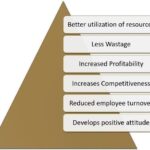New PMs, welcome to the real world! Throw away those 30-60-90 day plans…
- Sukanya Bharati
- August 21, 2024
- Blog
- #productmanagement, #productmanagementtraining, #productmanager
- 0 Comments
Learn the rules like a pro, so you can break them like an artist – Picasso
Riding the PM wave
For product managers, especially those who’ve recently joined, the role can be super exciting.
But we all know that building products is no easy feat and it’s natural to get carried away or get overwhelmed.
Also, for those new to the field, there’s a feeling of having to follow a set way of thinking, which has been drilled down by concepts, theories and frameworks.
There’s an emphasis on being ‘book smart’ over ‘street smart’.
Plans, plans, plans!
For example, the 30-60-90 plan sounds like a great way to get started and break down your first three months into actions.
Days 1-30: Learn/Observe – the people, product, processes, and company; basically how everything works
Days 31-60: Contribute/Experiment – use earlier learnings to contribute in small ways to features, processes, systems, etc.
Days 61-90: Advance/Implement – take on bigger roles and make more contributions to the product, business functioning, etc.
On paper the first 90 days can seem like a great way to get started and push your role in a clear direction. But the reality is never so smooth.
The plan doesn’t always take into account the many day-to-day issues any PM will face. And by simply following the plan to a tee it’s easy to get bogged down by ticking boxes over actual ‘experiential learning’ (ExL).
Another way to look at the first 90 days could be by laying out priorities. These must revolve around people, processes and product. Even though you need to know all three of them, deciding where you want to focus more of your time can help.
If it’s the product, do you understand it in and out, can demo it and discuss its technology? Do you know the exact problems it solves and the benefits that customers appreciate?
If its processes can you (re)view the journey of the business (and plan for the future), values, mission and vision and see how your product best fits into those?
If its people – can you meet the in-house teams – leaders, sales and marketing, developers and engineers – and find out what makes them tick, how they work and their pain points? Can you do the same for external stakeholders: customers, and investors? What drives them, what do they want from the product, its solution and the business?
As PMs you also need to understand the art of negotiation and persuasion, which cannot be learnt from a book alone. Convincing multiple people, solving disagreements, and managing team expectations are key to being successful. This comes from real experiences and by learning from mistakes. Remember, engineers think and act very differently from sales guys. You need to know what works for them and speak to them in their language.
None of this is easy and as you go deeper into the role it’s important to nurture these relationships while clearly understanding the product and how the business works.
This is just one way of looking at how to start but as long as it’s not simply finishing a task and moving to another one, it can work. Remember, the initial Learn and Observe plan plays a huge role in your learning.
For later ‘plans’, a big part of getting involved is doing things even if it means making mistakes. Doing so earlier means there’s more time to understand where things have gone wrong.
Mistakes also occur when questions aren’t asked. Being confident about asking the ‘why’ behind each process, product feature or roll-out plan is a great way to learn and can help the entire business.
Remember PMs, you need to wear many hats, not just for 90 days, but all through the role.
You need to observe, stay focused and prioritise what you want to accomplish.
This doesn’t mean we’re anti-framework
Know the rules well, so you can break them effectively – Dalai Lama XIV
Don’t worry, we’re not telling you to stop reading product books, follow frameworks or throw away concepts and theories!
But don’t forget product management belongs in the real world. It deals with products that are trying to solve real problems for real people. These people have different ways of thinking and are always emotional and sometimes irrational. Building products to overcome their pain points in the real world has to be done with experience.
Of course there are set rules for product management just like other roles. You should know these rules well. It’s just that these rules alone cannot dictate your day-to-day functioning.
Product management is complex and requires working on multiple issues at the same time while understanding target customer preferences, stakeholder interests, motivating disparate teams and understanding the product itself.
Finding the right balance between concepts and ExL and knowing when to apply theories or frameworks over experience and gut feel is an art in itself. But it’s also about recognizing a common set of patterns.
Remember, product building and management is a team effort and requires a united front. Think of any team sport. They say you’re only as good as your worst player so you need everyone to be on top of their game. Or think of a product manager as a music conductor or film director trying to bring everything together in harmony. A lot of this relies on ExL and not from a book.
Luckily, these methods are constantly hammered home by our industry experts who support businesses along their product journey. They’ve “been there and done that” and got their hands dirty. And their ExL is invaluable.
This is the second in our series of ‘Get Real PMs!’ blogs where we continue to dish out no-nonsense tips and tricks for PMs from those who’ve undertaken the long hard road of product building – and not from inside the pages of a book



